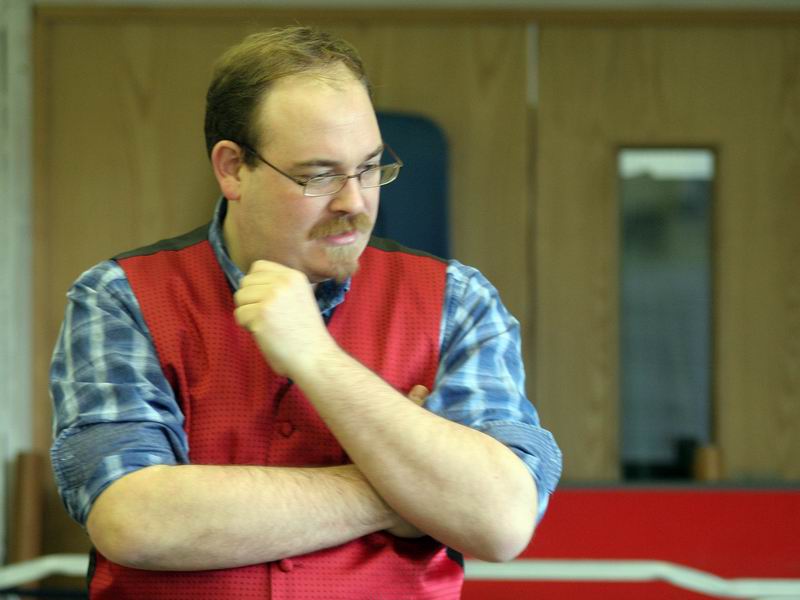
After the French-Prussian game I moved the clock on to 1809 and set up a similar scenario, although less of a meeting engagement. The French were all reduced to Seasoned and many of the Austrians were too, excepting the 3rd btn of IR3, the Landwehr battalion and the Moravian Volunteer battalion. Also these 3 units were considered Untrained (as were all of the French Ligne) whilst the remaining three Austrian battalions were considered trained.
I used the same battlefield as I used for Rexdorf, with the plan again to use the French as the attackers. This time it was going to be a harder situation, with them being of lower quality than in 1806 with the Austrians being of better quality. The battle quickly developed into 3 distinct combats.
On the French left two battalions under an ADC was detailed to take the southerly part of 
This was less a sensible attack but rather a ‘try it and see’ to work out how the changes worked on a BUA. 3/IR3 was raw and untrained but when 1eme 48e Ligne went in it was shot to pieces and withdrew. The damage was so great that it was unable to support the 2nd battalion’s attempt so it never even made the charge effort. The upshot was that the two French battalions were pinned down by 3/IR3 and effectively neutralised.
On the French right the Austrians needed to cover the road leading to the table edge where their second brigade under GM Grill would enter. This would comprise 3 battalions, two squadrons and a foot battery. To do this Oberst Hardegg covered the road with his Uhlans and Jager. The French, unwilling to push here, balanced things with their Chasseur a Cheval and a battalion of Legere.
That left the centre. Here the 33e Ligne Drew up in attack columns screened by the second battalion of the 15e Legere and marched towards the two remaining battalions of IR3.
1/IR3 threw out its schutzen and the French took several moves trying to rip away the screen. Once they had done so they attacked the slightly debilitated 1/IR3 and threw it back through 2/IR3.
This was also attacked and its volley failed to stop the two charging battalions and it to fell back, this time into the northern part of
The 3e bn of the 33e Ligne had another issue, the cavalry battery to the left of IR3. Although the voltigeurs of 3e bn eventually compelled it to withdraw (a player rather than morale decision) the battalion itself had huge holes torn in it and was very disordered.

Grill’s men were arriving, and the Austrians prepared to use them for a counterattack. Hardegg launched 4 squadrons of lancers at the 33e Ligne and it pretty much collapsed. Grill directed his troops off the road and the Moravian Freiwillige and two squadrons of the HusR10 ‘Stipiscz’ continued the pursuit.
Conclusions
This game merely illustrated again the need for attackers to have reserves and superiority of combined arms. Although pushed back IR3 was not really damaged. The French were not too badly damaged either but disordered. The 3/33e Ligne was the weak sister as it had been battered by the cavalry battery enough so as to be very vulnerable to the lancers. Once it had disintegrated the morale effect on its sister battalions saw them go too, along with 1/15e Legere. The game also proved the real effect of stationary rifles, the tussle between JgBn1 and 2/15e Legere proving unequal and allowing rifle fire to drive off the French horse artillery too. In a stationary or predictable situation the Austrians are a very unpleasant opponent for the French, although given the command radius of their generals and the number of available ADC’s I would not want to try anything too dynamic.
K
No comments:
Post a Comment